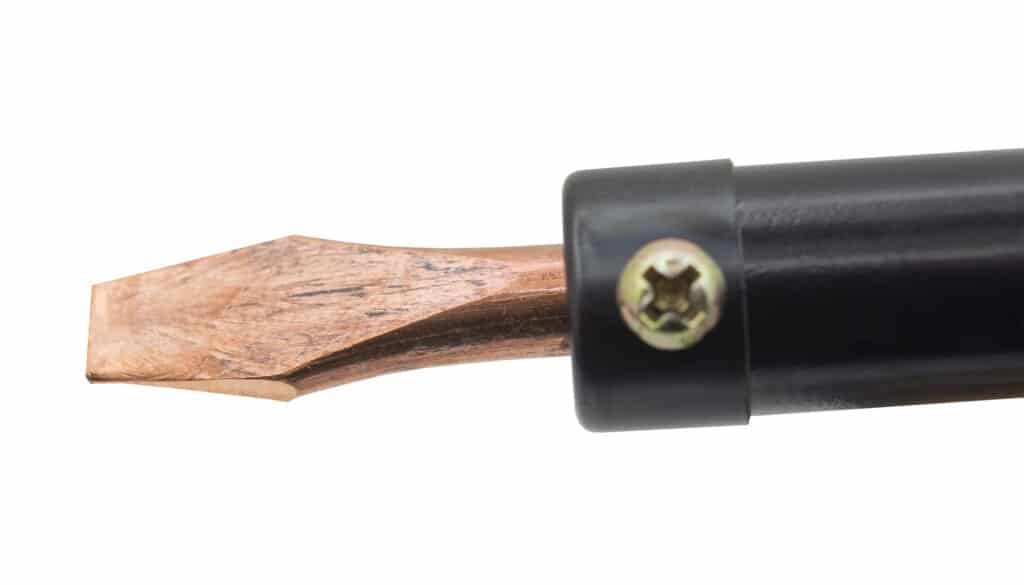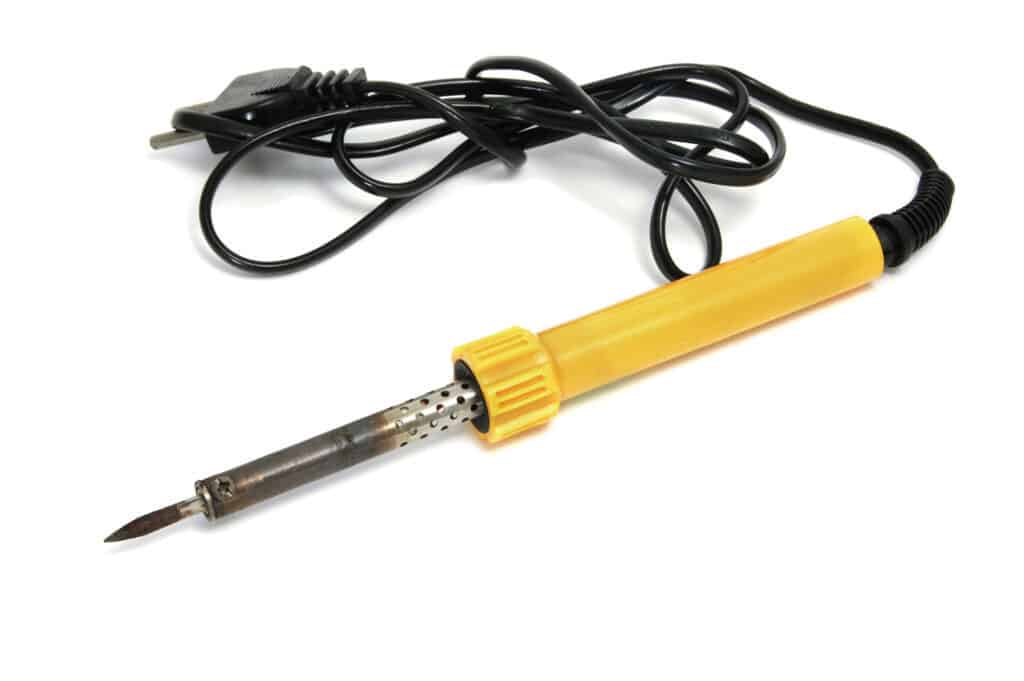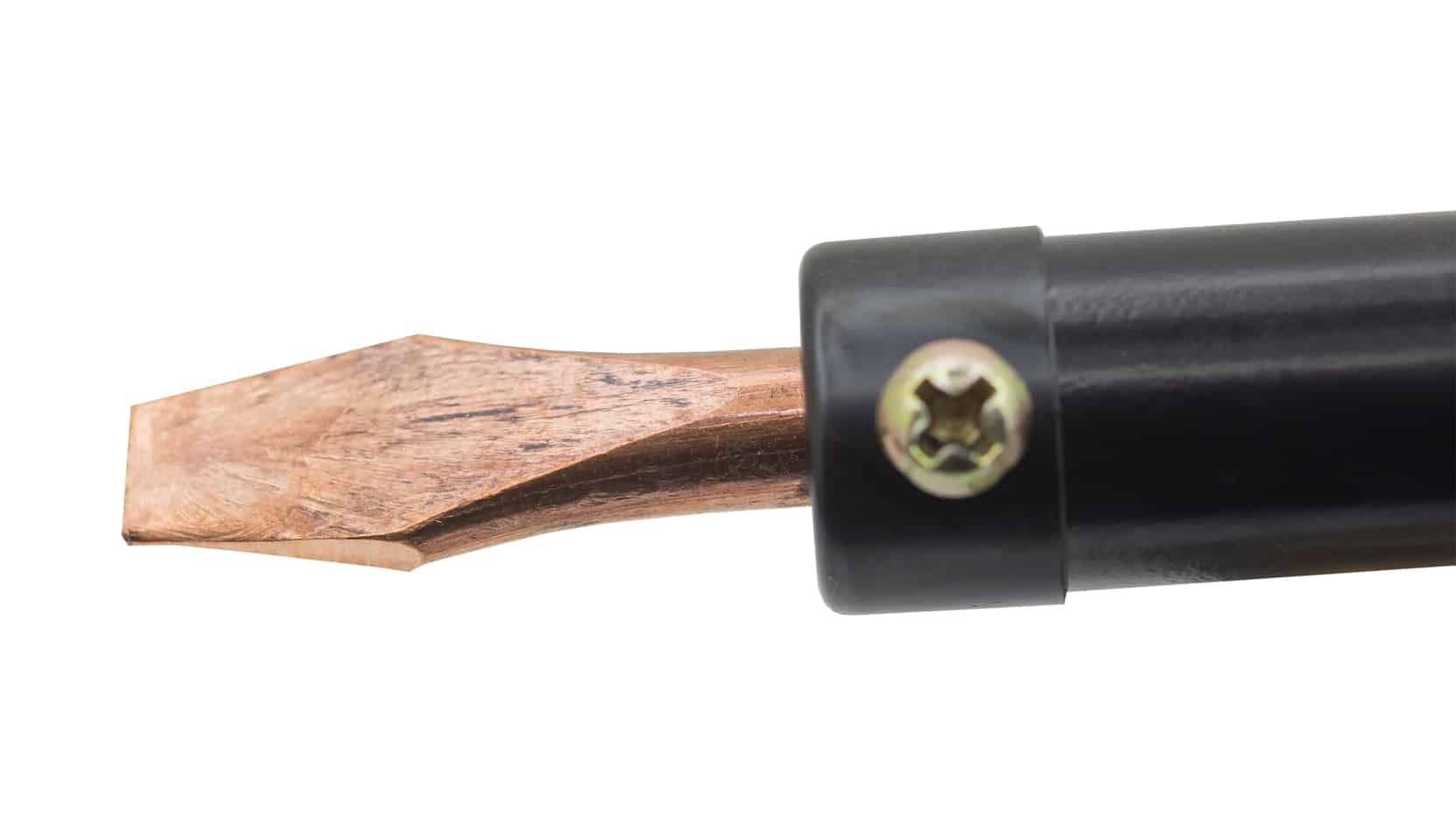“This post contains affiliate links, and I will be compensated if you make a purchase after clicking on my links.”
Soldering irons are a great tool for those who want to work on electronics or similar detailed wire projects. While these tools often last for years to come, the tips can become dull and since these soldering iron tips are not universal, it is important to know what works best for your device.
Soldering iron tips are not universal. Tips are designed to fit the machine they are sold for, but will likely not fit another soldering iron. They also come in many different shapes and thicknesses to match different types of work.
In addition to purchasing replacement tips, you will want to ensure that you are getting tips that fit your project needs. Most manufacturers will offer a variety of tips that fit their devices and complete differing jobs more effectively. To learn more about these soldering iron tips, please keep reading.
Soldering Iron Tip Basics: They Aren’t Universal
When it comes to replacing your soldering iron tip, you want to ensure that you are getting the correct size for the project that you have in mind. If your tip does not work properly, it will not transfer the level of heat needed to connect the wires.
On the other hand, if the tip is too large, it can transmit too much heat. This can damage the components that you are working with. Having too large of a tip can cause irreversible damage and create a lot of issues.
The best ways to ensure that you are purchasing a soldering iron tip that fits your exact iron are:
- Get tips that are designed to work for your exact soldering iron. Most manufacturers will sell replacement tips.
- Make sure that you choose the tip that fits the work you need to complete. We will further jump into the types of tips available, but there are a wide array of options for differing types of work.
- If you have a soldering iron that has certain advanced technology, you want to ensure you are finding tips that work for this tech.
Which Soldering Iron Tip Fits Your Needs
As mentioned, it is important that your soldering iron tip fits the needs of your project. There are several shapes and sizes of tip that you can find on the market today. You may want to replace your dull tip with a similar new tip or collect a variety of tips to fit your needs.
Some of the best tips available on the market today are:
Chisel Style Soldering Iron Tips

These tips are some of the most commonly used with soldering irons today and can complete a variety of tasks. They are able to distribute the heat evenly across the project you are working on. There are several reasons to have this tip on your soldering iron or at least at your disposal.
Some common reasons for choosing the chisel tip are:
- The edge of these tips are tapered, which allows you to get into smaller areas.
- If you have a desoldering task that needs completed, this is a great tip for this as well.
- You want to choose a chisel tip that is about 60% of the pad size that you are using to ensure correct use without overheating.
Conical Style Soldering Iron Tips

These conical style tips are designed for precision work. These tips are pointed and used to reach smaller, more intricate areas. The cone shaped tip is great for offering concentrated heat to a very defined area of the electrical piece.
Even if you are not using this conical style type consistently, it is one you want to have at your disposal. You do want to be careful when using these tips as they can be damaged more easily than others, this is due to the pointed tip. If you find that you are using too much pressure when soldering with this pointier tip, you will want to choose another tip.
Some of the benefits of using a conical tip are:
- They are great for getting into areas that cannot be reached by the other tips on our list.
- These are great for connecting wire applications due to the smaller spaces.
- You can find conical tips in various angles for even more detailed work, such as 30 degree and 90-degree tips.
Knife Style Soldering Iron Tips
These are lesser known but can still be very useful if you are using your soldering iron often and want to have a variety of tips available. This knife style tip has an edge that allows it to get into slotted cavities. This can be difficult for other style tips and makes these knife tips great for multi lead applications.
Hoof Style Soldering Iron Tips
Once again, a bit less common but still a great choice for those who use their soldering irons often. This hoof shaped tip is designed to collect excess solder as needed. It is great for jobs that require you to have a preloaded tip and can distribute the solder on certain applications.
The hoof tip is designed with a small concave impression on the surface, hence the hoof name. It can also be referred to as a bevel tip by some companies. You may also find these tips angled, which can be a good option for certain project needs.
How to Replace Your Soldering Iron Tip
As mentioned, soldering iron tips are often not universal and the best way to ensure you are getting a soldering iron tip that fits your iron is to buy from your manufacturer. Often, they are not interchangeable, and you will want to purchase any new replacement tips from the manufacturer themselves. Of course, you may be able to read your owner’s manuals and can learn more about what size tips work best for your needs.
When it comes to putting your replacement tips onto your soldering iron, this is pretty similar for all brands. You will want to ensure you are following the specific steps for your exact soldering iron, but most will follow this method:
- If you have been using your soldering iron, it is best to unplug it and ensure that it is completely cooled down. Never work with your soldering iron when it is hot, as this can clearly cause burns.
- Then find a locking nut, which is used to hold the tip and the tip-retaining sleeve into place on the soldering iron. Once you find this locking nut, unscrew it by hand. If it is difficult to unscrew by hand, pliers or a similar tool may be used to loosen the nut.
- Once this nut is unscrewed, slide it and the sleeve off the iron. At this point, the tip should easily be removed from the sleeve.
- The sleeve will be empty. Add the replacement tip into the sleeve. If you have gotten the correct size, this should be an easy fit.
- Once your new tip is in the sleeve properly, slide the sleeve back into place on the heating element. Replace the nut over the tip and tighten it back down by hand. If tightening this nut is difficult, pliers can be used once again to do the job.
- Ensure that the new tip is held in place correctly, but do not overtighten it. As soldering irons change temperatures, they will expand and contract. This can cause it to make the tip too tight if it is overly tightened to begin with.
Caring for Your Soldering Iron Tips
Once you have new replacement tips or if you are hoping to build your collection, you will want to care for these pieces properly. You will want to ensure that you keep the tip clean while you are using it by wiping it with a damp sponge occasionally. You should also wipe down this tip at the end of using it.
If you have several tips for your soldering iron, you will want to store them properly. You can purchase tip holders online, but they are a bit hard to find. However, you can also create a certain container or storage solution for keeping these tips safely stored for later use.
Purchasing New Tips for Your Soldering Iron
When it comes to buying replacement soldering iron tips, it is best to purchase from your iron’s manufacturer. This is due to the fact that many are not interchangeable and finding the right size for your exact iron can be challenging. However, you should also consider what style of soldering iron tip you need for the projects you are completing and purchase tips that fit these needs.




